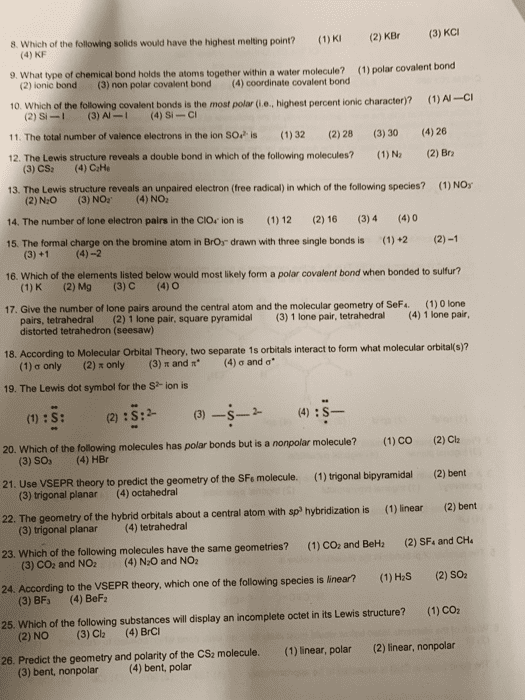CHM135H1 Chapter Notes - Chapter 8: Partial Charge, Atomic Orbital, International System Of Units

90
CHM135H1 Full Course Notes
Verified Note
90 documents
Document Summary
Molecular polarity influences chemical and physical properties of molecules. Polar covalent bonds form between atoms of different electronegativity. Dipole: atom has positive and negative end. Molecules can also be polar because of the net sum of individual bond polarities and lone-pair contributions. Strategy for predicting molecular polarity: draw electron-dot structure, predict 3d shape, draw bond dipoles, evaluate symmetry of bond dipoles and lone pairs of electrons. Nonpolar molecule: bond dipoles are arranged symmetrically and cancel. Polar: bond dipoles and lone airs arranged asymmetrically and result in a net dipole moment. Intermolecular forces, forces between molecules, affect properties like solubility, melting and poiling points. Play key role in stabilizing shapes and interaction of biomolecules. Also called van der waals forces: several different types, including dipole-dipole, ldf, and hydrogen bonds, ion dipole forces exist between ions and molecules, electrostatic in origin. Result of electrical interaction between ion and partial charge on polar molecules.


